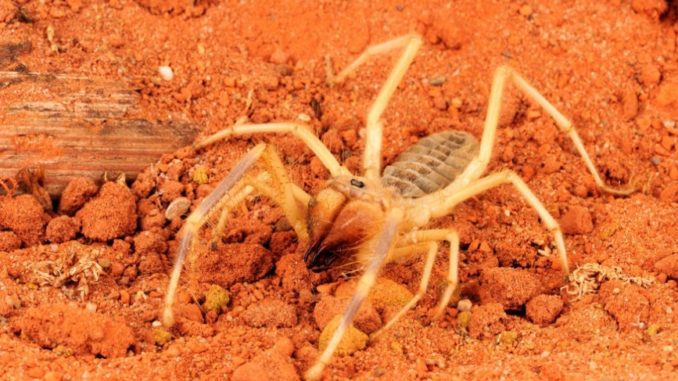
We have all heard horror stories about what can happen to us if we get bit by a camel spider. In fact, you have probably seen camel bites wound images on the internet which scared you to death, as it appeared that the arm of the person bitten would simply fall off. Let’s start by reassuring you: this will not happen. However, the camel spider bites surely do hurt. We mean, really hurt…
The Reality about Camel Spider Bites
Let’s start by killing the myths in order to straighten the facts. You are worried that a camel spider will come inside your bed while you sleep to chew and eat you? This will not happen. Many ideas about the camel spiders are only part of legends and myths, like the fact that they scream and that they can disembowel a camel while eating their stomach (If you actually look at the size of the spider, you should really wonder how that could be…).
Some people have said that this kind of spider can run up to 30 MPH. Can you imagine how fast she would have to move her legs at the size she is? That said, they are fast runner (about 10 MPH). But if you do see a camel spider running behind you, don’t try to outrun her uselessly; she is not running after you. Camel spiders don’t like to be in the sun, so she’s probably looking to be shaded by your body. Yes: Camel spider bite. But they much prefer to go after lizards, insects, rodents and snakes. Human flesh is not their thing. But if they do bite you, be ready for a lot of pain.
The Camel Spider
The camel spider is actually part of the family of the solifugae, so not an arachnid. In other words: Not a spider. The meaning of the name of the family of this creature is “those who run away from the sun.” As we did mention already, the camel spider is most probably not looking to bite you when she runs but simply wants to hide from the rays of the sun. However, they do look like some kind of mix between a spider and a scorpion. No wonder they are also called sun scorpion as well as sun spider, sand spider and wind spider.
If you come across a camel spider, the first thing you’ll notice is that it is bulky, of brown colour and also bushy. Their abdomen is fragmented in multiple divisions. Its lengthy hair shines and hides its long legs. But the one thing that defines the body of a camel spider is without a doubt its jaws, which it uses to pierce, crush and chomp their prey. But don’t be fooled as they come into many sizes. Therefore, it is not because it is only 0.5mm that it cannot bite you. They can also be as big as 6 inches in their larger format.
Where Can You Come across a Camel Spider?
Chances are, if you are living in a big city, you’ll never come across a camel spider. That is unless you one day decide to travel and visit a desert since that is where they live. Their number one enemy is sunlight. In order to avoid it, they bury themselves in the desert sand. It is also a way for them to keep their body temperature down. Naturally, that makes them night creatures, as they crawl out of their hole once the sun goes down to start hunting their prey.
What Happens if a Camel Spider Bites You?
Sometimes, you can see the camel spider bite you and then you know for sure that it is what happened. Otherwise, you should look for the symptoms below to confirm that it is the case.
Severe pain: If a camel spider bites you, you will feel the sting when it happens and it will transform itself into intense pain afterwards.
Inflammation and Tenderness: These factors are created by the spider bite which sends into shock the surrounding tissues around the bite. It results in inflammation and tenderness of the skin around the wound. But don’t worry, this is a totally normal situation and you won’t lose a limb!
Blood loss: There might be a small quantity of blood or even an important one, depending on the location of the bite and the depth of it. Act accordingly as you feel is needed in this situation.
How Can You Treat it?
Because they are non-venomous, there is normally no danger when you get bitten by a camel spider. However, if you already suffer from conditions like diabetes, high blood pressure, thyroid disorder, or allergies, it is better that you consult a doctor in order to be sure that no complications will occur.
Keep in mind that all horror stories you have heard about the camel spider are only myths. Next time you come across one, there is no need to panic. Just keep away from it so it doesn’t feel scared and bites you.

Leave a Reply